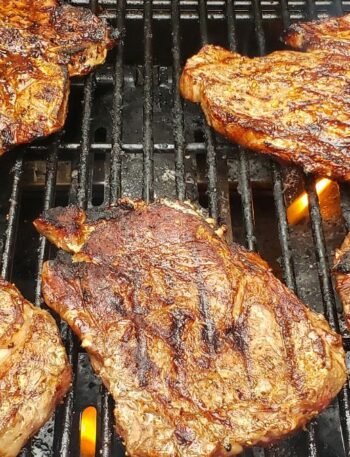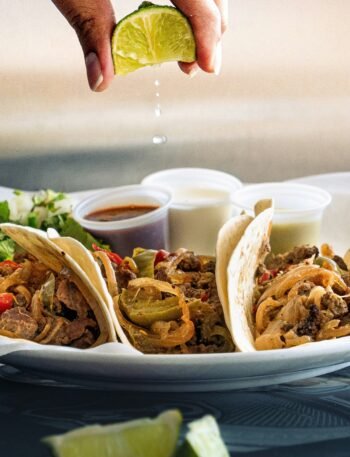- Introduction
- The History of New Year’s Eve
- Why New Year’s Eve Is Popular in the U.S.
- Food Traditions of New Year’s Eve
- Current Food Trends for New Year’s Eve
- Tips for Hosting a Memorable New Year’s Eve Celebration
- Recipes to Elevate Your New Year’s Eve Table
- Bringing It All Together: The Spirit of New Year’s Eve
Introduction
As the year comes to a close, New Year’s Eve becomes a moment to celebrate, reflect, and savor the simple joys of life. Gathering with family and friends, we honor the experiences of the past year while embracing the endless possibilities of the one ahead. Food takes the spotlight, weaving together beloved traditions and inspiring the creation of new ones. Join us as we uncover the history, meaning, and mouthwatering trends that make this holiday a true sensory celebration.
The History of New Year’s Eve
The origins of New Year’s Eve date back to ancient times, with celebrations steeped in cultural and historical significance. The earliest recorded festivities marking the new year were in Mesopotamia around 2000 BCE, where the year began in mid-March with the vernal equinox. Romans later shifted the date to January 1, naming the month after Janus, the two-faced god of beginnings and endings.
Over centuries, New Year’s Eve evolved, taking on unique flavors in different cultures. In medieval Europe, church services and prayers dominated the occasion. By the 20th century, modern traditions like fireworks, parties, and champagne toasts had solidified their place in the festivities, especially in the U.S. Did you know that the first-ever ball drop in Times Square happened in 1907? Today, it remains an iconic symbol of the holiday.
Why New Year’s Eve Is Popular in the U.S.
New Year’s Eve resonates deeply with Americans because it’s a celebration of hope, renewal, and connection. The holiday’s themes of starting fresh align with the American spirit of optimism and goal-setting. It’s a time to reflect on achievements, set resolutions, and share aspirations for the year ahead.
Family traditions, community events, and national broadcasts like the Times Square ball drop bring people together. According to surveys, over 50% of Americans celebrate the holiday with friends or family, while others embrace it as a time for personal reflection. The countdown to midnight embodies the shared excitement of closing one chapter and starting another—a sentiment that’s universally understood.
Food Traditions of New Year’s Eve
Food plays a symbolic and central role in New Year’s Eve celebrations. Around the world, dishes represent prosperity, luck, and togetherness:
- Hoppin’ John (U.S. South): Black-eyed peas and collard greens are staples, symbolizing wealth and good fortune.
- 12 Grapes (Spain): Eating a grape with each chime at midnight ensures luck for the 12 months ahead.
- Soba Noodles (Japan): Long noodles signify longevity and resilience.
- Pork and Sauerkraut (Germany): This hearty dish represents progress and prosperity.
Regional variations add unique twists. For instance, in the Midwest, many families serve oyster stew, while in Louisiana, gumbo takes center stage. No matter the dish, the act of sharing food creates lasting memories.
Current Food Trends for New Year’s Eve
Modern celebrations are reshaping traditional menus with creative twists and new influences. Today’s hosts are incorporating global flavors, dietary preferences, and interactive dining experiences.
- Fusion Cuisine: Traditional dishes like pork roast are getting upgrades with international spices, like a Korean-inspired gochujang glaze.
- Grazing Boards: Charcuterie boards featuring artisanal cheeses, cured meats, and seasonal fruits are Instagram favorites.
- Mocktails: With a rise in alcohol-free lifestyles, mocktails like sparkling cranberry rosemary fizz are stealing the spotlight.
- Virtual Celebrations: Meal kits tailored for virtual gatherings allow families to enjoy synchronized dining experiences across distances.
These trends highlight the evolving nature of New Year’s Eve as a holiday that honors both the past and present.
Tips for Hosting a Memorable New Year’s Eve Celebration
Hosting a New Year’s Eve party? Here are tips to ensure your celebration is as sparkling as the ball drop:
- Plan a Festive Menu: Combine crowd-pleasers like sliders or mini quiches with a signature dish that’s uniquely yours.
- Set the Scene: Use metallics, fairy lights, and candles to create an ambiance that captures the magic of the evening.
- Interactive Elements: Include a DIY dessert bar or a champagne cocktail station for guests to personalize their experience.
- Accommodate Dietary Preferences: Offer vegetarian, gluten-free, or kid-friendly options to make everyone feel included.
- Midnight Moment: Organize a countdown activity, like writing wishes for the new year to burn or release into the sky with biodegradable lanterns.
Recipes to Elevate Your New Year’s Eve Table
Whether you’re hosting a grand dinner or an intimate gathering, these recipes will take your celebration to the next level:
- Appetizer: Smoked Salmon Crostini with Dill Crème Fraîche
- Main: Herb-Crusted Beef Tenderloin with Red Wine Sauce
- Side: Truffle Mashed Potatoes
- Dessert: Chocolate Lava Cakes with Raspberry Coulis
Visit our full recipe collection to discover more dishes that combine tradition with innovation, ensuring your New Year’s Eve table is unforgettable.
Bringing It All Together: The Spirit of New Year’s Eve
New Year’s Eve is a reminder of the joy in celebrating togetherness, whether through cherished customs or new traditions. As we raise a glass to the year ahead, let’s carry forward the values of connection, gratitude, and hope. What are your favorite New Year’s Eve traditions? Share your memories and tips in the comments below. Let’s make this celebration one for the books!
Discover more from In The Kitchen With Vic
Subscribe to get the latest posts sent to your email.







